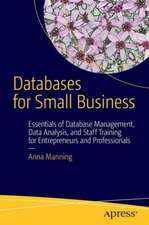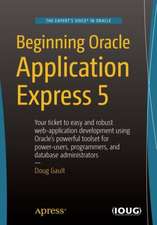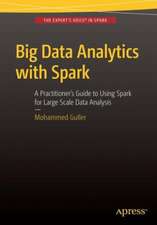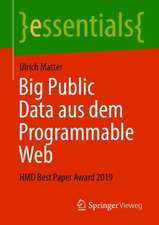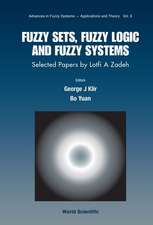Data Mining for Association Rules and Sequential Patterns: Sequential and Parallel Algorithms
Autor Jean-Marc Adamoen Limba Engleză Paperback – 14 sep 2012
| Toate formatele și edițiile | Preț | Express |
|---|---|---|
| Paperback (1) | 644.15 lei 6-8 săpt. | |
| Springer – 14 sep 2012 | 644.15 lei 6-8 săpt. | |
| Hardback (1) | 650.40 lei 6-8 săpt. | |
| Springer – 28 dec 2000 | 650.40 lei 6-8 săpt. |
Preț: 644.15 lei
Preț vechi: 805.19 lei
-20% Nou
Puncte Express: 966
Preț estimativ în valută:
123.32€ • 128.67$ • 103.37£
123.32€ • 128.67$ • 103.37£
Carte tipărită la comandă
Livrare economică 13-27 martie
Preluare comenzi: 021 569.72.76
Specificații
ISBN-13: 9781461265115
ISBN-10: 1461265118
Pagini: 268
Ilustrații: X, 254 p.
Dimensiuni: 155 x 235 x 14 mm
Greutate: 0.38 kg
Ediția:Softcover reprint of the original 1st ed. 2001
Editura: Springer
Colecția Springer
Locul publicării:New York, NY, United States
ISBN-10: 1461265118
Pagini: 268
Ilustrații: X, 254 p.
Dimensiuni: 155 x 235 x 14 mm
Greutate: 0.38 kg
Ediția:Softcover reprint of the original 1st ed. 2001
Editura: Springer
Colecția Springer
Locul publicării:New York, NY, United States
Public țintă
Professional/practitionerCuprins
1. Introduction.- 2. Search Space Partition-Based Rule Mining.- 2.1 Problem Statement.- 2.2 Search Space.- 2.3 Splitting Procedure.- 2.4 Enumerating ?-Frequent Attribute Sets (cass).- 2.5 Sequential Enumeration Procedure.- 2.6 Parallel Enumeration Procedure.- 2.7 Generating the Association Rules.- 3. Apriori and Other Algorithms.- 3.1 Early Algorithms.- 3.2 The Apriori Algorithms.- 3.3 Direct Hashing and Pruning.- 3.4 Dynamic Set Counting.- 4. Mining for Rules over Attribute Taxonomies.- 4.1 Association Rules over Taxonomies.- 4.2 Problem Statement and Algorithms.- 4.3 Pruning Uninteresting Rules.- 5. Constraint-Based Rule Mining.- 5.1 Boolean Constraints.- 5.2 Prime Implicants.- 5.3 Problem Statement and Algorithms.- 6. Data Partition-Based Rule Mining.- 6.1 Data Partitioning.- 6.2 cas Enumeration with Partitioned Data.- 7. Mining for Rules with Categorical and Metric Attributes.- 7.1 Interval Systems and Quantitative Rules.- 7.2 k-Partial Completeness.- 7.3 Pruning Uninteresting Rules.- 7.4 Enumeration Algorithms.- 8. Optimizing Rules with Quantitative Attributes.- 8.1 Solving 1-1-Type Rule Optimization Problems.- 8.2 Solving d-1-Type Rule Optimization Problems.- 8.3 Solving 1-q-Type Rule Optimization Problems.- 8.4 Solving d-q-Type Rule Optimization Problems.- 9. Beyond Support-Confidence Framework.- 9.1 A Criticism of the Support-Confidence Framework.- 9.2 Conviction.- 9.3 Pruning Conviction-Based Rules.- 9.4 One-Step Association Rule Mining.- 9.6 Refining Conviction: Association Rule Intensity.- 10. Search Space Partition-Based Sequential Pattern Mining.- 10.1 Problem Statement.- 10.2 Search Space.- 10.3 Splitting the Search Space.- 10.4 Splitting Procedure.- 10.5 Sequence Enumeration.- Appendix 1. Chernoff Bounds.- Appendix 2. Partitioning in Figure 10.5: Beyond3rd Power.- Appendix 3. Partitioning in Figure 10.6: Beyond 3rd Power.- References.











